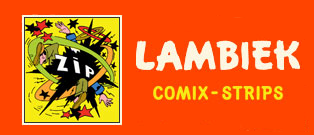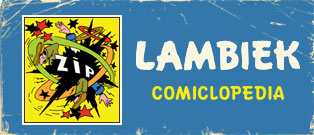Oortman print about "childhood virtues and vices".
Jan and Gerrit Oortman, father and son, were 18th-19th century Dutch woodcut artists, and the illustrators of several "catchpenny prints" for children, several made for the Society for Public Welfare.
Life and work
Jan Oortman Sr. was born in 1753 in the city of Amsterdam. He began his career as a figure cutter in a cotton factory in the nearby town of Weesp. Anticipating the decline of the factories, he returned to Amsterdam in 1781 and devoted himself to the art of woodcutting for the printing press. For the rest of his life, Oortman made woodcuts for many prints, among them so-called "catchpenny prints" with educational or moralistic picture stories. His son, Gerrit Oortman, was born in January or February 1781 (his baptism was on 4 February 1781), and by the mid-1790s became his father's apprentice. Another pupil of Jan Oortman was Alexander Cranendoncq. Jan Oortman's other son was Joachim Jan Oortman (1777-1818), who worked as an engraver in Paris. Jan Oortman died in 1823, his son Gerrit one year before him, in 1822.
Catchpenny prints
Since the invention of printing, several European countries had a long tradition of picture story prints, meant for the entertainment and education of the poorer parts of society. In France, the so-called Épinal prints presented idealized depictions of historical events and "true stories". The Germans called them "Bilderbogen". In the Dutch speaking parts of the Low Countries, these prints reflected the religious, ethical, social and pedagogical views of their time. Known as catchpenny prints ("centsprent"), children's prints, folk prints or "little lad's papers" ("mannekensbladen"), they were mass-produced, often on cheap paper, with rudimentary artwork and text captions with simple rhymes. Often, the texts were presented in both Dutch and French language.
The early prints presented stories in a scandalous and sensational way, including depictions of boozing, carnal desires and defecation. During the 19th century, the Dutch Society for Public Welfare ("Maatschappij tot Nut van 't Algemeen") urged printers to focus on educational tales for the youth, resulting in the prints becoming more cautionary and edifying. Still, many of the tales from previous centuries remained in print, sometimes with a revised text. Even though they were aimed at the poor, the catchpenny prints reached all layers of society. Historically, the stories give an accurate account of the everyday life and beliefs of common people, revealing long-forgotten games that children used to play, school life and the many merchants that walked the streets.
During a period of about 250 years, starting in the late 17th century and lasting roughly until the 1930s, millions of catchpenny prints were sold in the Netherlands alone. Some had print runs of 500,000 copies, an impressive amount considering the fact that the Netherlands had a population of only a couple of million people at the time. Originally using woodcuts and a hand-press, the printers gradually moved on to other techniques, including wood engraving and lithography. This allowed the artwork to become more detailed and the prints to reach a higher circulation. Since they were mass-produced and not considered art, names of the actual illustrators have been lost in history. Most prints only mention the name of the printer or retailer. Still, the origin of many prints remain unknown, as printing blocks were often resold, leading to many reprints. Only a couple of Dutch catchpenny prints have included the initials or full names of the actual woodcutter or engraver. Among the known names are Alexander Cranendoncq, Jan Christoffel Jegher, Dirk and Hermanus van Lubeek, Hendrik Numan and Jan and Gerrit Oortman.
Oortman print with scenes from Dutch history.
Oortman prints
Several Oortman prints are in the collection of the Rijksmuseum in Amsterdam. Signed with the signature "Oortman", they are attributed to both Jan and Gerrit, but they could just as well have been produced by either father or son. Working for a variety of Amsterdam printers, several Oortman prints have the seal of the Society for Public Welfare. As a result, the Oortman prints are strongly educational and moralistic in nature. A print for publisher J. Noman shows scenes from national history, including the escape of Hugo Grotius (Hugo de Groot) from Loevestein Castle in a book chest, and the death of Prince Maurits. A second history print, by presented episodes from the Eighty Years' War in the 17th century. Some prints were based on designs by fellow woodcutter Hendrik Numan, like a sheet with nine representations of generous deeds by persons from Dutch history (published by David Le Jolle).
Another Numan print (number #33) presents scenes of well-behaved children at school. Even more moralistic was a print for publisher Johannes Bouwer, which showed twelve representations of the rewarding of obedient children and the punishment of disobedient ones. Further prints showed several kinds of crafts and professions, mythological figures from several tribes and a selection of international and folkloric costumes. A notable fiction print by Oortman (Erve H. Rynders #11) was 'De Vertelling van Klein Duimpje met den Wildeman', presenting twelve images from the fairy tale of Tom Thumb.
'De Vertelling van Klein Duimpje met den Wildeman '(Erve H. Rynders #11), an adaptation of Charles Perrault's fairy tale Tom Thumb.





